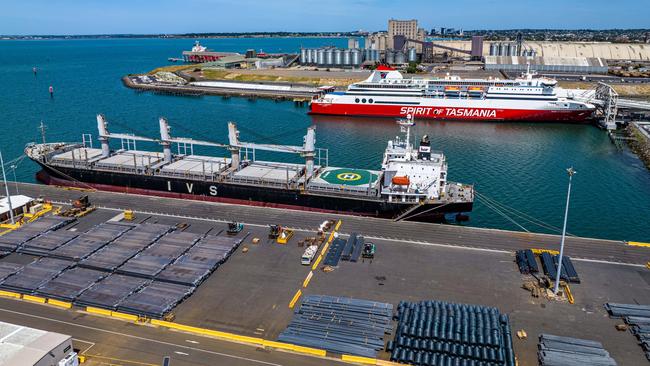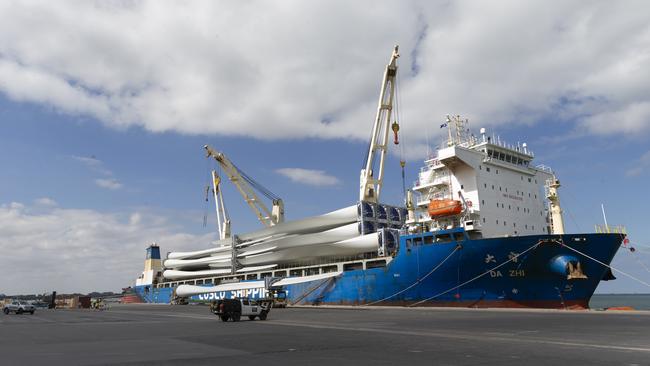GeelongPort pitches itself as offshore wind hub after veto of Port Hastings
Following a government veto of a rival plan, GeelongPort has proposed the development of a new $500m renewables hub to support Victoria’s offshore wind industry.

GeelongPort has proposed the development of a new $500m renewables hub to support the development of Victoria’s offshore wind industry, as it moves to capitalise on the federal government veto of a rival facility.
The development proposal, which appears to have secured the support of Deputy Prime Minister Richard Marles, positions the GeelongPort as the most viable alternative to the Port of Hastings.
Victoria’s state Labor government had earmarked the Port of Hastings to play a vital role in supporting its ambitious energy transition plan, before that was thrown into disarray when federal Environment Minister Tanya Plibersek vetoed its development application.

GeelongPort chief executive Brett Winter said the facility was proposing a 25ha brownfield development that would provide much-needed certainty to offshore wind developers that the critical infrastructure would be in place when needed near the end of the decade.
“We’re in a great position to support the broader multi-port strategy that really helps de-risk the industry and helping get it off the ground. We’re looking to be ready by early 2029,” Mr Winter told The Australian.
Unlike the Port of Hastings, GeelongPort would not need to clear the same environmental hurdles which drastically curtailed its prospects.
Victoria’s government had said Hastings would serve as a base of operations for the assembly of offshore wind farms, but earlier this year, Ms Plibersek ruled the development posed an “unacceptable” risk to wetlands at Western Port Bay.
Mr Winter said GeelongPort’s terminals were in existing deep waters, in excess of 12m, which would allow vessels to moor to load the turbines.
The Victorian government had described the terminal as “critical to ensure the achievement of at least 2GW of offshore wind generation by 2030”, a target that it enshrined into legislation in November last year.
There is growing alarm within Australia’s offshore wind industry that the country will have to import the giant turbines measuring in excess of 150m high when installed, which will then be required to be assembled before being towed out to sea to be placed in position.
Without certainty about where the turbines can be assembled and subsequently loaded onto specialist installation vessels, some developments will be reluctant to place orders.

Anxiety around the port infrastructure threatens to temper widespread excitement about the prospects of the industry that was spurred when Victoria announced ambitious targets to place offshore wind at the heart of its plan to wean off from coal.
Victoria in 2022 set a target of generating about 20 per cent of its energy needs from offshore wind within a decade. The target then doubles to 4GW by 2035, and 9GW by 2040.
In all, Victoria sees potential for 13GW of offshore wind capacity by 2050, five times the current renewable generation in Victoria.
The target drew strong interest from a plethora of global powerhouses and domestic giants, and some 10 developments have now secured coveted development licences.
The successful developments are now moving ahead with their projects, though industry sources said they were keen for clarity about which ports would be used.
The Port of Hastings is understood to be considering a revised application, but industry figures are alarmed about slow progress.
GeelongPort could in the meantime steal a march, but it will look for public funding and clarity about the investment returns should it proceed with the development.
Globally, orders for wind turbines increased 23 per cent in the June half of the year, dominated by China, according to research firm Wood Mackenzie.
Total investment worldwide came to $US42bn ($62bn) over the period.
More Coverage
Originally published as GeelongPort pitches itself as offshore wind hub after veto of Port Hastings





